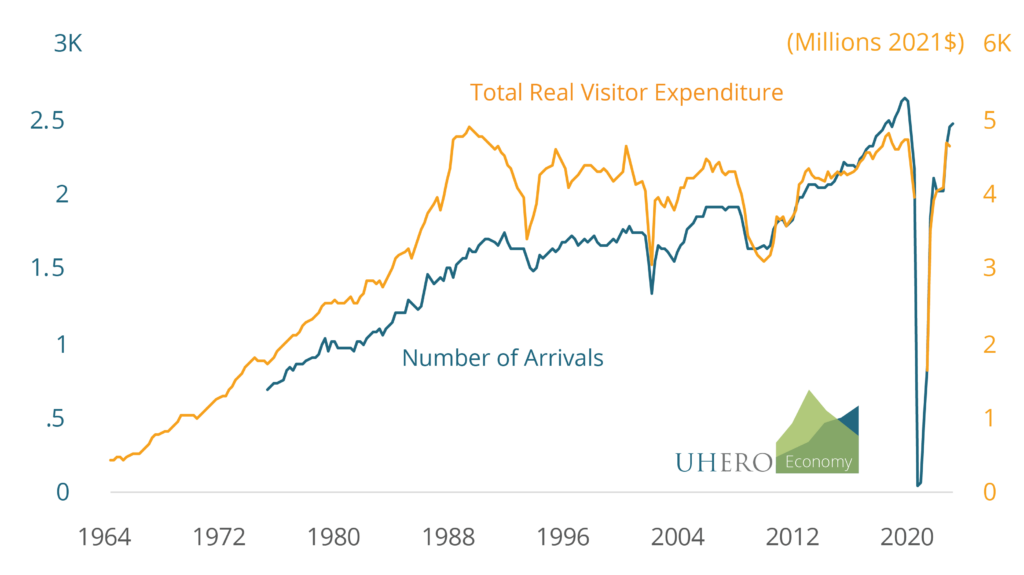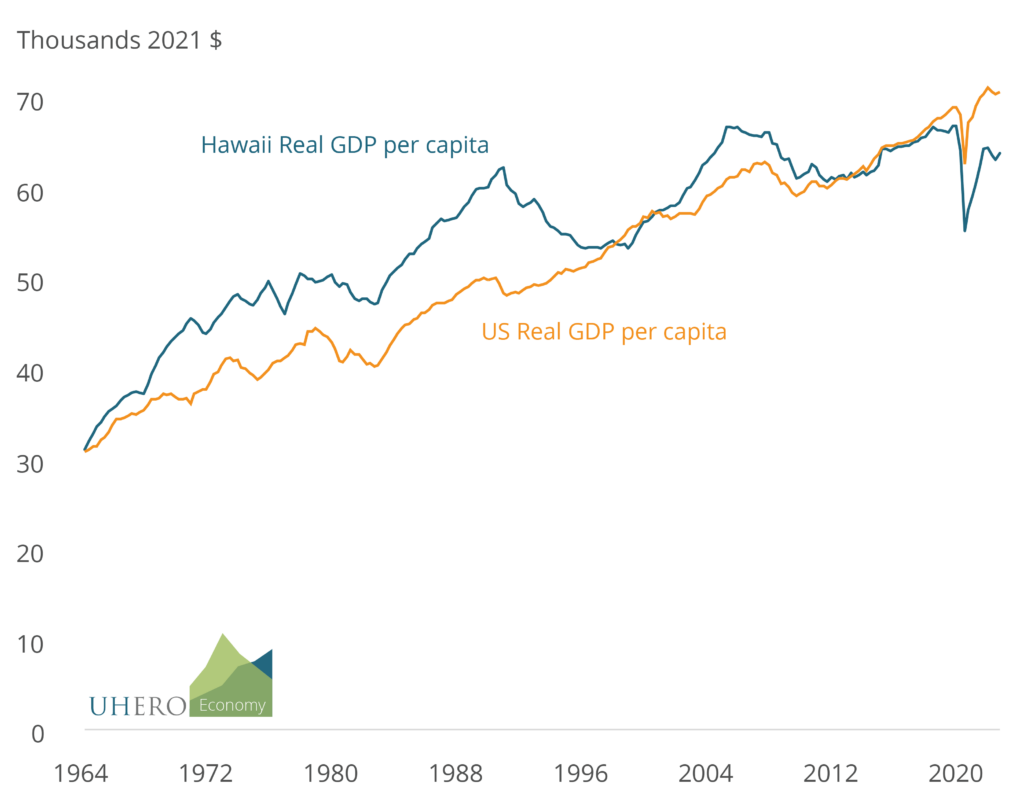Hawaii’s long-term economic recovery after COVID-19
by Steven Bond-Smith, UHERO, July 6, 2023
The following is adapted from a speech I recently gave at the Western Regional Science Association meetings on the Big Island.
My research focuses on the implications of theoretical regional economic models for small and isolated places, like Hawaii. These are places where distance matters such that they are generally unable to access large local markets or other local sources of external scale economies. The term “external scale economies” refers to the productivity benefits of close proximity to large-scale economic activity. Because of the interaction between distance, scale, external economies, and the mobility of people and economic activity, small economies in isolated places have very different characteristics and require unique policies for economic development.
Short-term shocks and long-term declining productivity growth
It’s not just the pandemic. While COVID-19 is the biggest shock to tourism yet, the industry is periodically punctured by shocks: the 1991 recession, 9/11, the 2001 recession, and the Great Recession, all lead to sharp declines in tourist numbers and spending.
Figure1: Quarterly tourism data Hawaii, 1964-2022

Source: UHERO data portal
Notes: Real visitor spending adjusted for Urban Hawaii CPI.
It wasn’t always this way. For a long time, tourism in Hawaii experienced significant growth in both visitor numbers and expenditures. Technologies such as the jet engine, and a growing and increasingly wealthy middle class who wanted to vacation in Hawaii, made tourism a lucrative industry. This translated into substantially higher Real GDP per capita in Hawaii than in the rest of the United States.
But in recent decades visitor spending stopped growing while the number of tourists continued to increase. And for several decades now, the tourism industry has not contributed to growth in per capita GDP in the same way that it had in the past.
As a result, Hawaii has fallen dramatically behind the rest of the US in terms of per person income growth. The long run growth in Hawaii’s real GDP per capita has fallen from 1.9% prior to 1990 to 0.5% during the last three decades. US real GDP per capita annual growth has also fallen, but by much less, from 1.5%, to 1.1%. This means Hawaii went from a real per capita trend growth rate 0.5 percentage points higher than the US to 0.6 percentage points lower.
Figure 2: Quarterly real GDP per capita, Hawaii, 1964-2021

Source: UHERO data portal
Notes: Quarterly GDP per capita adjusted by Urban Hawaii CPI to 2021 dollars
After three decades of lagging growth Real GDP per capita in Hawaii has now fallen below the US. The COVID-19 pandemic has just exacerbated this long run trend in which Hawaii’s real GDP per capita has now fallen to 10% behind the US overall. If we were to account for regional price differences, Hawaii would be even further behind.
read … Full Report